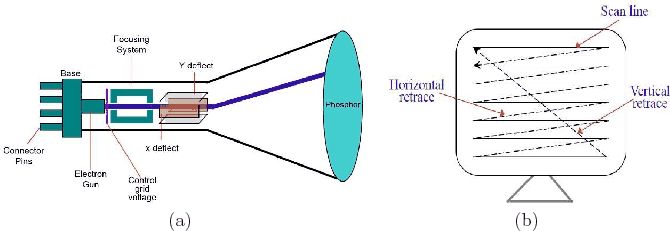
Next: Toward custom VR displays Up: 4.6 Displays Previous: 4.6 Displays Contents Index
 |
The most important technological leap was the cathode ray tube or CRT, which gave birth to electronic displays, launched the era of television broadcasting, and helped shape many concepts and terms that persist in modern displays today. Figure 4.35 shows the basic principles. The CRT enabled videos to be rendered to a screen, frame by frame. Each frame was scanned out line by line due to the physical limitations of the hardware. The scanning needed to repeat frequently, known a refreshing the phosphor elements. Each light in each position would persist for less than a millisecond. The scanout behavior and timing remains today for modern smartphone displays because of memory and computation architectures, but it is not ideal for VR usage. Section 6.2.2 will explain how motion is perceived when a sequence of frames is rendered to a display, and what goes wrong with VR systems.
 |
The next major advance was to enable each picture element, or pixel, to be directly and persistently lit. Various technologies have been used to produce flat-panel displays, the output of which is illustrated in Figure 4.36. Liquid crystal displays (LCD displays) became widely available in calculators in the 1970s, and progressed into larger, colorful screens by the 1990s. The liquid crystals themselves do not emit light, but most commonly a backlight shines from behind to illuminate the whole screen. Currently, the vast majority of flat-panel displays are on either LCDs or light emitting diodes (LEDs). In the case of LEDs, each pixel is able to be directly lit. The consumer market for flat-panel displays was first driven by the need for flat, big-screen televisions and computer monitors. With the advancement of smartphones, miniaturized versions of these displays have been available with low cost, low power, and extremely high resolution. This enabled low-cost VR headset solutions by putting a lens in front of a smartphone screen, as was shown in Figure 4.30.
Steven M LaValle 2020-11-11